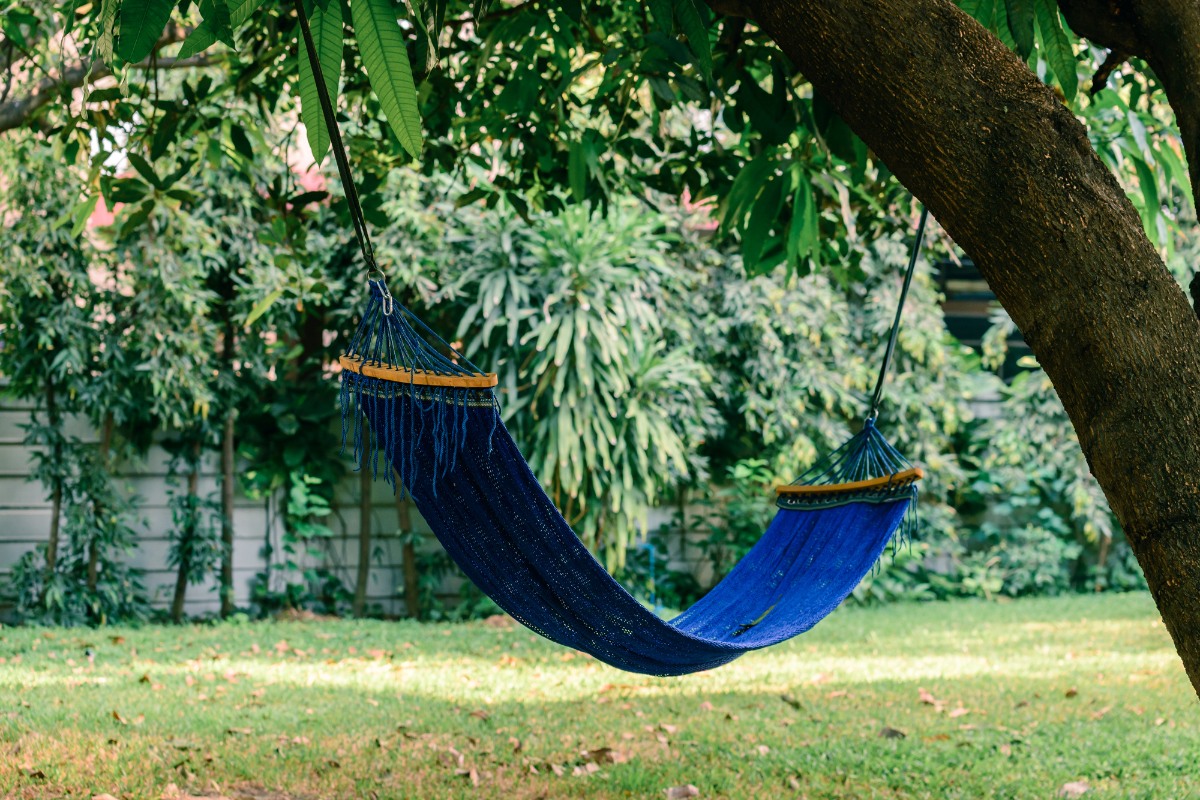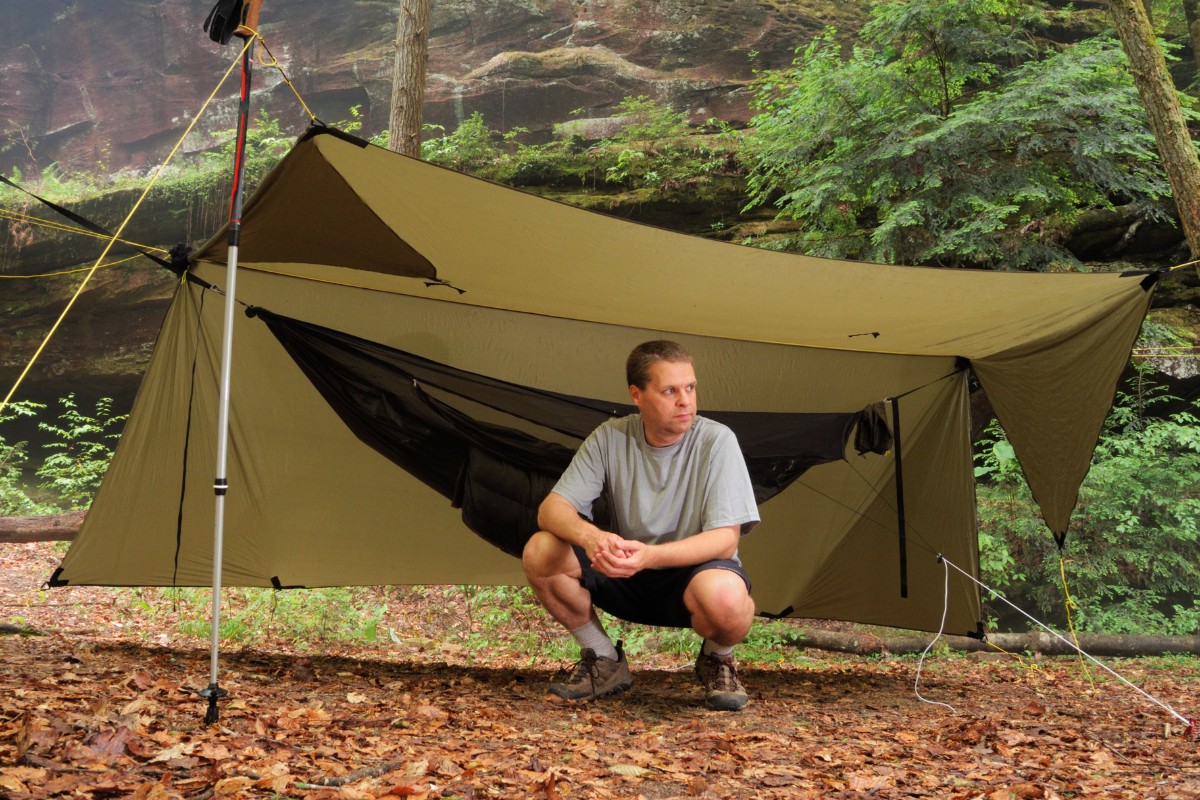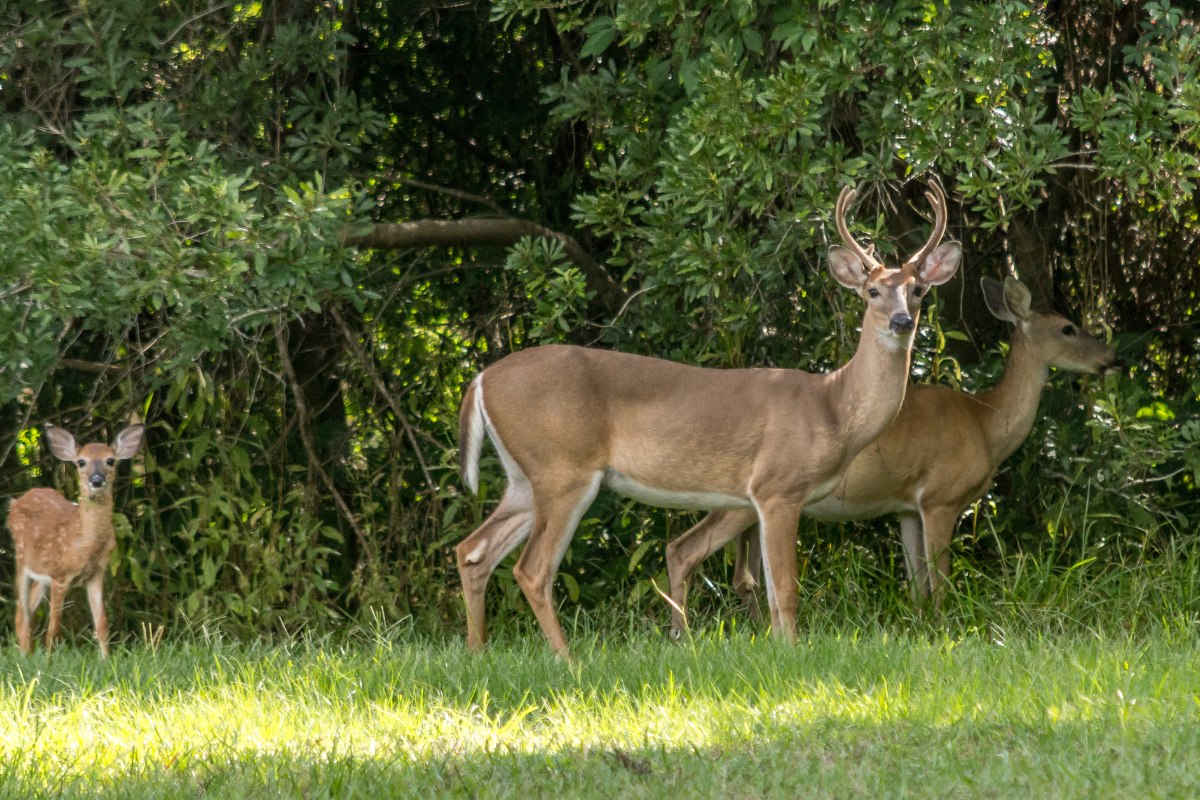When you compare camping hammocks online or at your local store, you may notice different numbers plus units for fabric specs, like 210T, 70D, or 1.9 oz, for example:
- ENO SingleNest Hammock: 70D High Tenacity Nylon Taffeta
- Grand Trunk Double Deluxe Hammock: 210T Parachute Nylon
- Warbonnet Blackbird Double Layer 1.9 oz Ripstop Nylon Hammock
What Are the Differences Between 70D and 210T
For the same rating nylon hammock, 70D and 210T refer to the same fabric, which weighs 1.9 oz/sy (ounce per square yard). So they are just different descriptions for the same fabric. For the above three different brands of hammocks, if they use the same type of nylon material, their fabric will be completely the same.
D is the abbreviation of DENIER. Denier is a measure of the linear mass density of fiber, yarn, or thread, and is defined as the mass in grams per 9,000 meters. 70D means 9,000m fiber mass weighs 70g. Denier refers to the density and thickness of the yarn, not the fabric weight.
T represents the thread count, which is the number of threads used horizontally and vertically per square inch of fabric. 210T means a total of 210 threads in the square inch. Thread count refers to the woven density of yarn for the fabric.
However, denier and thread count are two units of measurement that are not interchangeable. How thick the thread (D) is and how tightly the threads are woven together (T) determine the weight of the fabric (ounce per square yard). Different deniers may have different thread counts, so the fabric weight is different.
What Is Tex
Tex is another unit of measure of the linear mass density of fiber, yarn, and thread, and is defined as the mass in grams per 1,000 meters.
Tex and Denier are interchangeable:
- 1 tex is 9 deniers
- 1 denier is 0.11 tex
So, 210D equals 23.3 tex.
Denier is more commonly used in the United States and the United Kingdom, while Tex is used more in Canada and Continental Europe.
Is There Any Connection Between Denier (D) and Thread Count (T)
No, there is no direct connection between denier and thread count. But only for nylon (not for polyester), D and T have some general correlations. For example:
- 70D has the 210T designation, so the fabric is 1.9 oz per sqyd.
- 20D has the 380T designation, so the fabric is 1.0 oz per sqyd.
You won’t see 70D nylon have a 380 thread count. All 70D comes with 210T.
Hammock manufacturers often use Denier or oz/yd² to describe the fabric; thread count is less used. For most nylon material, there is a common relation between Denier and ounce per square yard:
- 20D = 1.0 oz/sy
- 30D = 1.1 oz/sy
- 40D = 1.6 oz/sy
- 70D = 1.9 oz/sy
For example, Warbonnet Lightweight Double Blackbird XLC Fabric Spec: 40D Nylon Outer & 20D Nylon Inner. Although it doesn’t specify fabric weight, we can easily know that the outer 40D nylon is 1.6 oz/sy, and the inner 20D nylon is 1.0 oz/sy.
What’s the Difference Between Lightweight and Heavyweight Fabric
Some brands like Warbonnet specifically point out lightweight or heavyweight fabric they use in the description, which refers to the weight of the fabric (ounce per square yard) only, not the hammock weight capacity. The heavyweight fabric is heavier, stronger, and more durable than the lightweight one.
Should I Consider Denier or Fabric Weight When Choosing a Hammock
The answer is yes.
A higher Denier means the fiber or thread is thicker, sturdier, and less stretchy. Accordingly, the fabric and hammock weight is higher. Material more than 40D is considered opaque and not see-through. For example, human hair is around 20D, and 70D nylon is thick and strong enough for use in a blind taste test.
For camping hammocks, typically the fabric weighs from 1.0 oz/sy to 1.9 oz/sy (20D to 70D), for occupants from lighter weight less than 150 pounds to heavier weight above 300 pounds. Different brands have slightly different max weight capacities, but they won’t differ too much.
For most people’s weight, all hammocks from 1.0 to 2.0+ can be safely chosen, but choosing a proper fabric weight is important for comfortable sleeping. A larger weight hanger sleeping in a 1.0 hammock will feel too stretchy, while a lighter weight hanger in a 1.9 hammock will feel too stiff. Usually, people around 160 lbs starting from 1.0 or 1.1 is a good choice, 250 lbs choosing 1.9 is suitable, and weight between 160 and 250 lbs or above could choose accordingly. Personal preference for stretch and softness are the determining factors, and only when you lie in a hammock can you find your own sweet spot.








